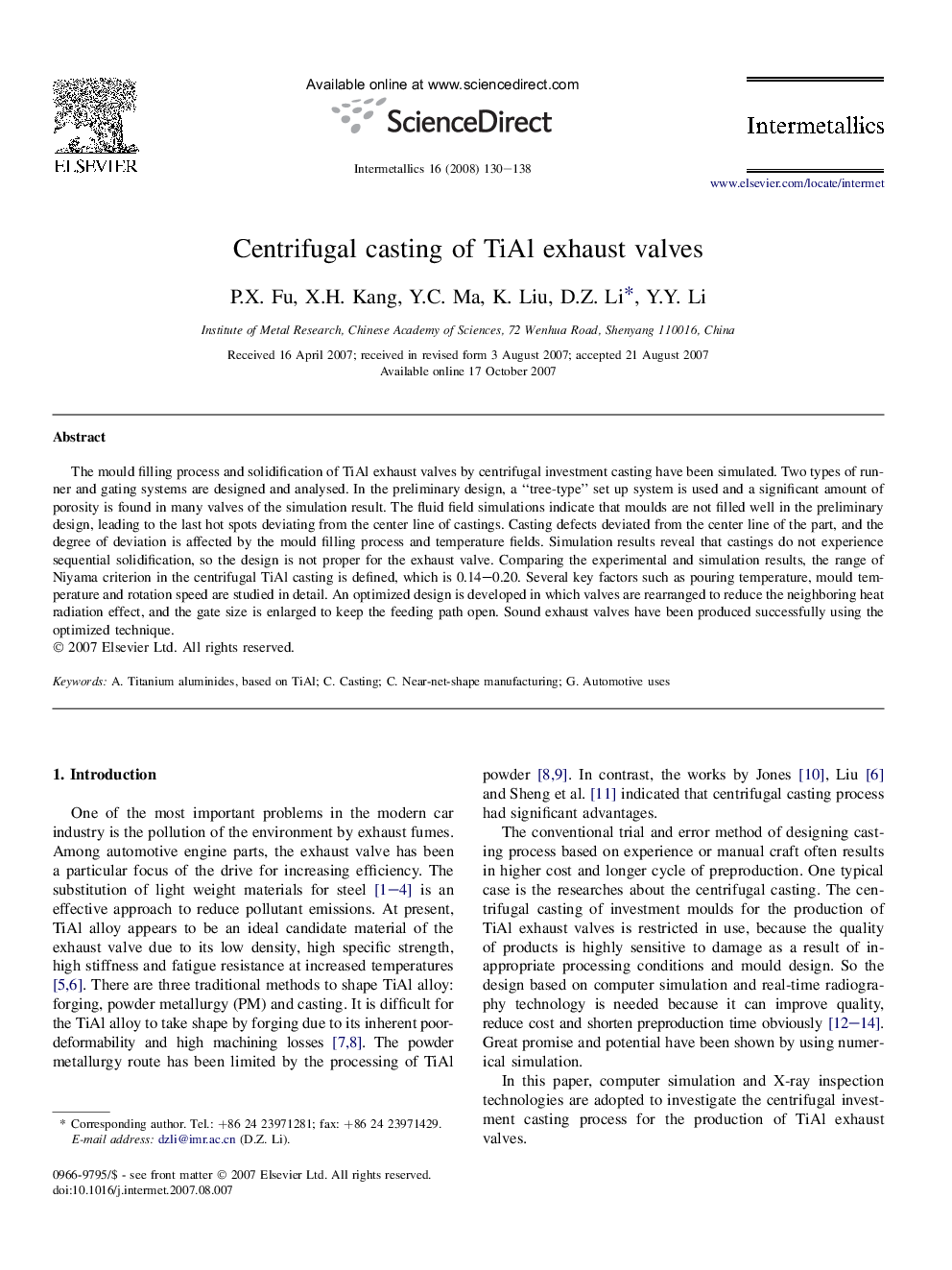| Article ID | Journal | Published Year | Pages | File Type |
|---|---|---|---|---|
| 1601499 | Intermetallics | 2008 | 9 Pages |
Abstract
The mould filling process and solidification of TiAl exhaust valves by centrifugal investment casting have been simulated. Two types of runner and gating systems are designed and analysed. In the preliminary design, a “tree-type” set up system is used and a significant amount of porosity is found in many valves of the simulation result. The fluid field simulations indicate that moulds are not filled well in the preliminary design, leading to the last hot spots deviating from the center line of castings. Casting defects deviated from the center line of the part, and the degree of deviation is affected by the mould filling process and temperature fields. Simulation results reveal that castings do not experience sequential solidification, so the design is not proper for the exhaust valve. Comparing the experimental and simulation results, the range of Niyama criterion in the centrifugal TiAl casting is defined, which is 0.14-0.20. Several key factors such as pouring temperature, mould temperature and rotation speed are studied in detail. An optimized design is developed in which valves are rearranged to reduce the neighboring heat radiation effect, and the gate size is enlarged to keep the feeding path open. Sound exhaust valves have been produced successfully using the optimized technique.
Keywords
Related Topics
Physical Sciences and Engineering
Materials Science
Metals and Alloys
Authors
P.X. Fu, X.H. Kang, Y.C. Ma, K. Liu, D.Z. Li, Y.Y. Li,
